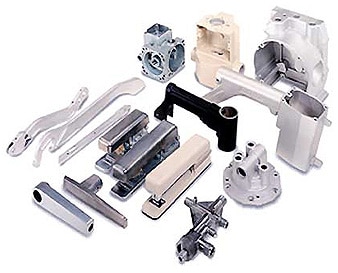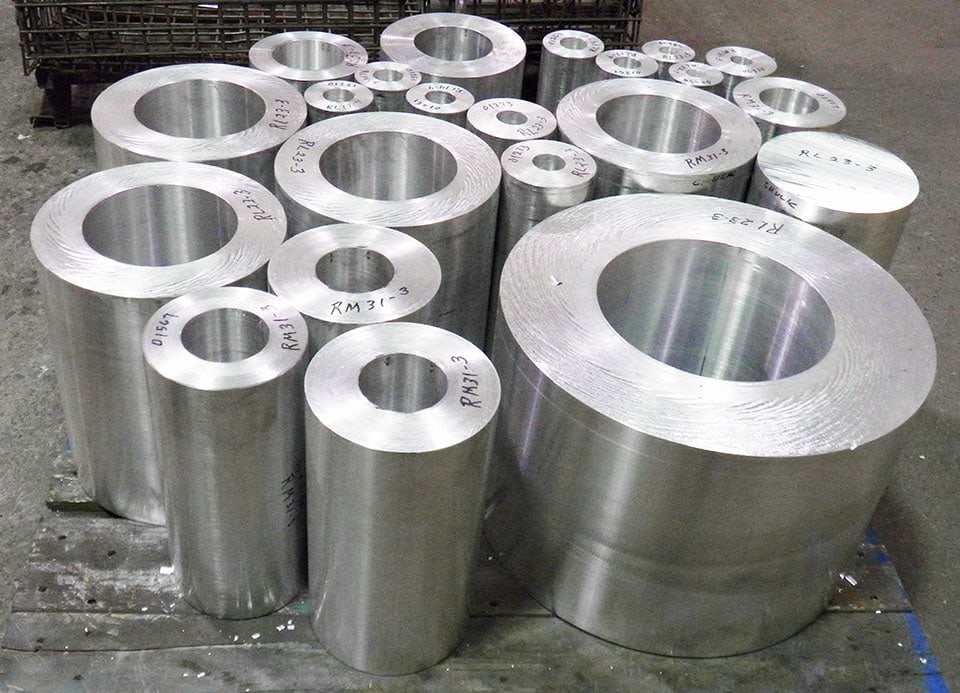Aluminum Foundry and Wisconsin Aluminum Foundry: building a strong future
The Lots Of Uses Light Weight Aluminum Castings: A Comprehensive Overview for Market Professionals
Light weight aluminum castings play a crucial function throughout various markets, many thanks to their one-of-a-kind properties. These sturdy and light-weight components are vital in automobile and aerospace applications. Comprehending their advantages and the manufacturing procedures involved can substantially affect efficiency and efficiency. As innovation advances, brand-new technologies proceed to emerge. Sector specialists should take into consideration these variables to make informed choices. The effects of these growths are worth checking out even more.
Benefits of Light Weight Aluminum Castings in Different Industries
Light weight aluminum castings provide countless advantages throughout different industries, making them a recommended selection for many applications. Among the main benefits is their lightweight nature, which contributes to total energy performance in transport and equipment. This lowered weight also boosts convenience of taking care of and installation, leading to lower labor prices.
Moreover, aluminum castings exhibit excellent deterioration resistance, extending the life expectancy of elements in rough atmospheres. Their electrical and thermal conductivity enables effective warm dissipation and effective electric applications.
In addition, aluminum can be conveniently alloyed and manipulated, enabling the production of intricate shapes and layouts that satisfy particular engineering demands. This versatility sustains technology in sectors such as automobile, aerospace, and durable goods.
Last but not least, the recyclability of light weight aluminum aligns with lasting methods, making it an eco pleasant option for modern-day production. Overall, the advantages of light weight aluminum castings place them as essential products in various fields.
Key Production Processes for Light Weight Aluminum Castings
A range of making procedures are made use of to produce light weight aluminum spreadings, each tailored to fulfill details application demands and production quantities. Among one of the most usual approaches are sand spreading, pass away casting, and financial investment casting.

Investment casting, likewise recognized as lost-wax casting, supplies exceptional surface finishes and detailed details, typically used for smaller, precision elements. Additionally, gravity spreading makes use of the pressure of gravity to load molds, suitable for bigger castings where precision is less vital. Each process has its advantages, catering to diverse commercial needs while making best use of effectiveness and quality in light weight aluminum casting production.
Applications of Aluminum Castings in Automotive and Aerospace
In many applications within the aerospace and automobile industries, aluminum castings play a crucial function as a result of their light-weight buildings and exceptional strength-to-weight ratio. In the automotive field, components such as engine blocks, transmission instances, and wheel rims are commonly created making use of light weight aluminum castings. These components take advantage see of decreased weight, resulting in improved fuel efficiency and improved efficiency.
In aerospace, light weight aluminum castings are crucial for architectural elements, consisting of aircraft frames, landing gear, and engine real estates. The material's resistance to deterioration and ability to withstand high temperature levels make it perfect for these requiring applications. In addition, light weight aluminum castings promote intricate geometries, allowing the design of elaborate parts that add to general aircraft effectiveness.
Advancements and Advancements in Light Weight Aluminum Spreading Technology
As industries proceed to evolve, advancements in aluminum casting technology are driving substantial renovations in efficiency and efficiency. Advanced strategies such as 3D printing and casting simulation software application have transformed traditional practices, permitting for much more exact layouts and lowered waste. These innovations enable manufacturers to develop complicated geometries that were formerly unattainable, improving the adaptability of light weight aluminum spreadings.
Furthermore, the advancement of brand-new alloy compositions and therapy methods has actually improved mechanical buildings, making spreadings lighter yet stronger. Automated processes are also being integrated, lessening human mistake and increasing production speed.

Ideal Practices for Picking and Using Aluminum Castings
When using and selecting aluminum spreadings, cautious consideration of particular criteria can greatly influence the final product's performance and long life. Sector professionals need to evaluate the specific application needs, including load-bearing capacities, corrosion resistance, and thermal conductivity. Picking the proper alloy is crucial, as various alloys use differing attributes and staminas.
In addition, recognizing the casting procedure-- whether sand spreading, pass away casting, or investment spreading-- will certainly influence the last item's top quality and cost-effectiveness. Quality control procedures, such as non-destructive screening and dimensional inspections, are necessary to guarantee that the spreadings fulfill market criteria.
Appropriate handling and storage space of aluminum spreadings can stop damages, assuring peak efficiency. Collaborating with credible distributors that prioritize high quality control can improve the integrity of the completed parts. By adhering to these ideal practices, sector specialists can make the most of the benefits of hop over to here light weight aluminum castings in their applications.
Often Asked Questions
What Are the Environmental Effects of Aluminum Spreading Production?
Light weight aluminum spreading manufacturing can cause considerable environmental effects, consisting of greenhouse gas exhausts, power usage, and source depletion. Furthermore, incorrect waste management may cause soil and water contamination, affecting neighborhood communities and areas.
How Do Aluminum Castings Contrast to Other Steel Spreadings?
Aluminum spreadings are lighter and corrosion-resistant contrasted to other steel spreadings like iron or steel. They offer premium thermal and electric conductivity, making them optimal for applications where weight and durability are critical aspects.
What Is the Price Difference Between Aluminum and Other Products?
The expense of aluminum spreadings normally varies from moderate to high, typically more inexpensive than stainless-steel yet pricier than some plastic alternatives. Aluminum Castings. Variables such as manufacturing material, volume, and intricacy requirements my website substantially influence overall prices
Can Aluminum Castings Be Recycled?
Light weight aluminum castings can without a doubt be reused. This procedure substantially decreases power consumption and ecological impact compared to creating brand-new light weight aluminum, making recycling an important method in advertising sustainability and resource conservation within different markets.
What Precaution Should Be Taken During Light Weight Aluminum Spreading Processes?
Throughout aluminum spreading processes, necessary safety steps include putting on safety equipment, making certain appropriate air flow, using heat-resistant devices, maintaining equipment, and adhering to safety and security procedures to stop direct exposure to hazardous materials and minimize the threat of crashes. (Wisconsin Aluminum Foundry)
Sand spreading entails creating a mold from sand, enabling for large spreadings and complex shapes. Investment casting, additionally recognized as lost-wax casting, offers phenomenal surface area finishes and elaborate information, frequently utilized for smaller, precision parts. Furthermore, gravity spreading uses the pressure of gravity to fill up mold and mildews, appropriate for bigger castings where accuracy is much less crucial. Furthermore, comprehending the spreading procedure-- whether sand casting, die casting, or financial investment spreading-- will influence the final item's high quality and cost-effectiveness. Aluminum spreadings are lighter and corrosion-resistant compared to various other metal castings like iron or steel.